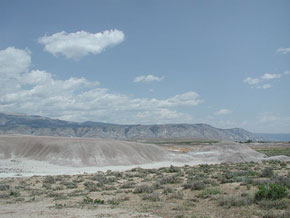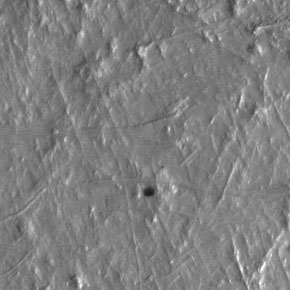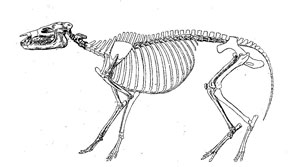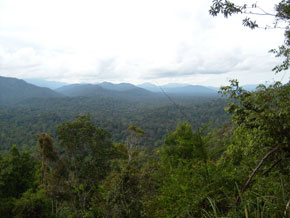Profile Mihlbachler
Profile: Matthew Mihlbachler
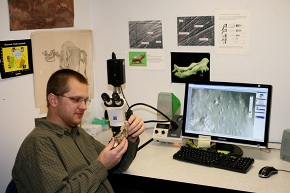 As a paleontologist, I work with fossils on a daily basis. Having examined thousands of fossil bones and teeth, you sometimes forget that fossils are only small parts of what were once very complex organisms. Aside from being anatomically and physiologically complex, animals display higher specialized behaviors, develop intricate social networks, and interact with hundreds of other plant and animal species in multilayered ecosystems. Although our ability to understand much of this complexity in extinct species and their ecosystems is lost, we can be certain that extinct organisms and their ecosystems were as sophisticated and intricate as those of today.
As a paleontologist, I work with fossils on a daily basis. Having examined thousands of fossil bones and teeth, you sometimes forget that fossils are only small parts of what were once very complex organisms. Aside from being anatomically and physiologically complex, animals display higher specialized behaviors, develop intricate social networks, and interact with hundreds of other plant and animal species in multilayered ecosystems. Although our ability to understand much of this complexity in extinct species and their ecosystems is lost, we can be certain that extinct organisms and their ecosystems were as sophisticated and intricate as those of today.
Ecology is the sub-discipline of biology that examines how species interact with their environments; paleoecology is the study of fossil species and how then interacted with ancient environments. Paleoecologists don’t just study the anatomy of fossils and their positions within the rock layers. They look for evidence of behaviors, such as bite-marks on bones. They examine faunas – collections of different fossils from sites of similar ages - to understand what animals lived together. They reconstruct population structure by using evidence from mass-death assemblages of the same species. Finally, they study the nature of the sediments from which the fossils come, to reconstruct the environment in which these animals lived. In many ways, paleoecologists are like detectives; they pull together small pieces of information from many aspects of the fossil record to reveal details about fossil animals that go far beyond what they looked like and where and when they lived.
My primary interest in perissodactyls is their evolutionary paleoecology: I am interested in how the changing environments of the last 55 million years influenced their ecology and evolution. Understanding the dynamics of animal ecology and changing environment has important implications for us today. During the early Eocene epoch, when perissodactyls first appeared, there was a sudden spike in global temperatures caused by a tremendous increase in atmospheric greenhouse gasses. This warming event resembles some of the predictions for future climate changes caused by our release of CO2 into the atmosphere. Studying the paleoecology of animals during the early Eocene warm interval may prove to be vital for understanding how living species and ecosystems will cope with future global warming.
Feeding is the most important type of ecological interaction that an animal has with its environment. Obviously, we can’t directly observe what long-extinct animals ate. However, there are ways in which we can gather evidence about their diets.The dung of many Pleistocene animals has been found preserved in caves and river bottoms. The chemistry of fossil bones and teeth can also tell us about diet although, because the chemical signal of the bone gradually changes as it is mineralized, this evidence is gradually lost as the skeleton fossilizes.
Another way to reconstruct diet is by examining the wear patterns on the surfaces of teeth. When animals chew, their food, together with other abrasive substances (such as sand and dust) that are accidentally ingested, leaves microscopic scars on the surfaces of teeth in the forms of pits and scratches. The study of these microscopic wear features is called dental microwear analysis. I am currently studying the dental microwear of the earliest perissodactyls and other mammals from the Bighorn Basin in Wyoming, during the early Eocene warming interval.
The animals that survived that warming event underwent decreases in body size. I am trying to find additional evidence for ecological response to global warming by reconstructing the diets of these species before, during, and after this warming event by examining the dental microwear of fossil teeth. Investigating a major question such as this takes time and a lot of detective work.
So far, I have been able to demonstrate that the climate changes during this time period did have an influence on the diets of early perissodactyls, but although I have observed changes in the microwear patterns through time, it is not yet clear exactly how their diets changed. I am currently examining the dental microwear patterns of living species from modern rainforests that are similar to those of the earliest Eocene, to try to develop a better understanding of how microwear relates to diet. This will make it possible for us to better interpret diets for extinct species from microwear data.

